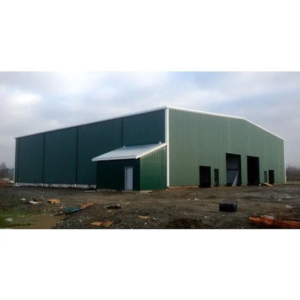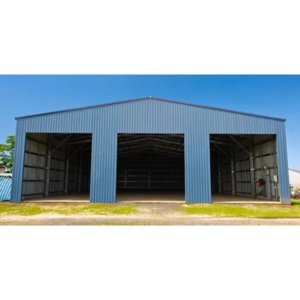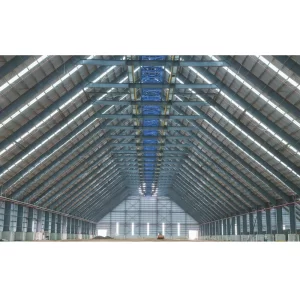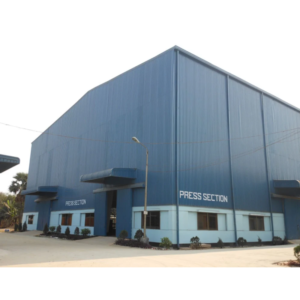Prefabricated Steel Buildings
Prefabricated Steel Buildings: The Ultimate Guide to Durable & Cost-Effective Construction
Introduction
Prefabricated steel buildings are revolutionizing the construction industry with their durability, affordability, and fast assembly. These structures are pre-engineered and manufactured off-site, then transported for quick installation at the final location. Whether used for industrial warehouses, commercial spaces, agricultural storage, or residential buildings, prefabricated steel buildings offer high strength, low maintenance, and excellent resistance to extreme weather conditions.
As the demand for sustainable, cost-effective, and modular construction grows, prefabricated steel buildings have become the top choice for businesses and industries looking for long-term solutions.
This guide covers:
-
What are prefabricated steel buildings?
-
Types of prefabricated steel structures
-
Advantages and applications
-
Materials and construction process
-
Energy efficiency and sustainability
-
Installation and maintenance tips
-
Frequently Asked Questions (FAQs)
What Are Prefabricated Steel Buildings?
Prefabricated steel buildings, also known as pre-engineered steel structures, are designed and manufactured in a controlled factory setting, ensuring high precision and minimal waste. The components are then transported to the site and assembled efficiently, reducing overall construction time and cost.
Steel buildings are known for their robust structural integrity, energy efficiency, and customization options, making them suitable for various industries, including manufacturing, logistics, aviation, and commercial sectors.
Key Features of Prefabricated Steel Buildings
✔ Fast installation & cost savings
✔ Highly durable & weather-resistant
✔ Customizable designs & flexible layouts
✔ Fireproof, pest-resistant & low maintenance
✔ Eco-friendly & energy-efficient
Types of Prefabricated Steel Buildings
1. Industrial Steel Buildings
-
Used for warehouses, factories, workshops, and storage units.
-
Designed for heavy-duty operations and large-scale production.
-
Includes steel frames, insulated panels, and high ceilings.
2. Commercial Steel Buildings
-
Suitable for retail stores, shopping centers, and office spaces.
-
Offers modern architectural designs with glass and metal facades.
-
Customizable for expansions, partitions, and energy-efficient systems.
3. Agricultural & Farm Steel Buildings
-
Used for barns, grain storage, greenhouses, and poultry farms.
-
Resistant to moisture, pests, and extreme weather conditions.
-
Customizable ventilation, lighting, and insulation options.
4. Residential Steel Buildings
-
Prefab steel homes, garages, and storage sheds.
-
Energy-efficient with proper insulation and solar panel integration.
-
Quick and affordable housing solution for rural and urban areas.
5. Aircraft Hangars & Aviation Buildings
-
Designed for private and commercial aircraft storage.
-
Offers wide-span structures with minimal internal columns.
-
Built to withstand high winds, snow loads, and extreme temperatures.
6. Storage & Self-Storage Steel Units
-
Secure and weatherproof self-storage units for businesses.
-
Quick assembly with customizable storage capacity.
-
Low-maintenance, ensuring long-term durability and safety.
Benefits of Prefabricated Steel Buildings
1. Fast Construction & Easy Installation
-
50% faster than traditional concrete structures.
-
Pre-engineered parts ensure quick assembly and reduced labor costs.
2. Cost-Effective & Budget-Friendly
-
Lower material and labor costs compared to conventional buildings.
-
Minimal maintenance and long lifespan reduce future expenses.
3. Customization & Design Flexibility
-
Modular designs allow expansions and modifications.
-
Adaptable for various industries and aesthetic preferences.
4. Weather-Resistant & Fireproof
-
Withstands hurricanes, earthquakes, and extreme temperatures.
-
Fire-resistant materials prevent fire hazards and damage.
5. Environmentally Friendly & Energy Efficient
-
Uses recyclable materials, reducing environmental impact.
-
Insulated panels and solar-ready roofing enhance energy efficiency.
6. High Durability & Strength
-
Rust-resistant, pest-proof, and long-lasting.
-
Can last 50+ years with proper maintenance.
7. Minimal Site Disruption
-
Factory fabrication means less noise, dust, and waste on-site.
-
Ideal for urban areas with space and time constraints.
Materials Used in Prefabricated Steel Buildings
🔹 Structural Steel Frames – Provides strength, flexibility, and longevity.
🔹 Galvanized Steel Panels – Corrosion-resistant and low maintenance.
🔹 Insulated Sandwich Panels – Improves thermal efficiency and climate control.
🔹 Polycarbonate & Glass Panels – Enhances natural lighting and aesthetics.
🔹 Fireproof Coatings – Increases fire resistance and safety.
Installation & Maintenance Tips
Installation Guidelines
✅ Prepare the foundation – Ensure a level and stable base.
✅ Use skilled labor – Follow manufacturer guidelines for safe assembly.
✅ Ensure proper insulation – Reduces heating and cooling costs.
✅ Anchor the structure securely – Prevents damage during strong winds.
✅ Perform quality checks – Inspect joints, fasteners, and panel alignment.
Maintenance Tips
✅ Inspect for rust and corrosion – Apply protective coatings as needed.
✅ Clean and repaint surfaces – Maintains appearance and longevity.
✅ Check for leaks and insulation damage – Prevents moisture buildup.
✅ Ensure proper ventilation – Improves air circulation and prevents condensation.
✅ Perform annual structural audits – Ensures long-term stability and safety.
Frequently Asked Questions (FAQs)
1. How long do prefabricated steel buildings last?
Prefabricated steel buildings last 50 years or more with proper maintenance.
2. Are steel buildings cheaper than traditional buildings?
Yes! Steel buildings cost 20-40% less than concrete or brick structures due to lower labor and material expenses.
3. Can steel buildings withstand earthquakes and hurricanes?
Yes, they are designed to be seismic-resistant and withstand high wind speeds.
4. Are prefabricated steel buildings customizable?
Yes! You can choose size, layout, insulation, windows, doors, and color options.
5. Do steel buildings require a foundation?
Yes, a concrete foundation is required to provide stability and support.
6. Are prefabricated steel buildings energy-efficient?
Yes! With proper insulation, reflective roofing, and solar panels, they can reduce energy costs significantly.
7. Can I expand a steel building later?
Yes, modular steel buildings allow for future expansion and modifications.
8. How long does it take to assemble a prefabricated steel building?
Depending on the size, it can be assembled within weeks instead of months.
9. Are prefabricated steel buildings fire-resistant?
Yes, steel is a non-combustible material and resists fire damage.
10. Do steel buildings require frequent maintenance?
No! Steel buildings are low maintenance, requiring only periodic inspections and minor upkeep.
Final Thoughts
Prefabricated steel buildings offer a fast, affordable, and durable solution for a wide range of applications. Whether you need a warehouse, factory, office, or storage unit, steel structures provide strength, flexibility, and sustainability.
Looking for a reliable and cost-effective steel building solution? Explore the latest prefabricated steel structures today! 🏗️🔥




